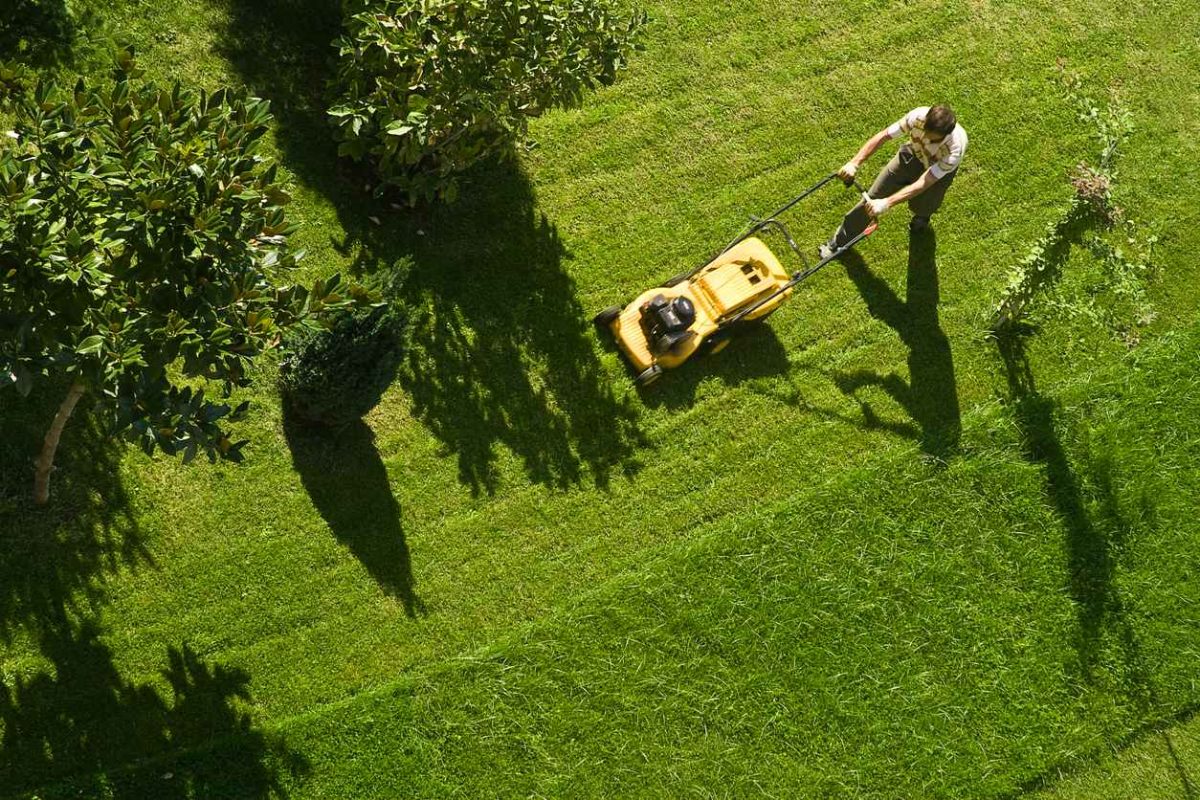How to Prep Your Home’s Lawn For Fall
As the vibrant colors of summer begin to fade and the crisp air of fall approaches, it’s time to shift your focus to the health and beauty of your lawn. Fall is a crucial season for lawn care, as the groundwork you lay now will determine the lushness and resilience of your grass come springtime. Landmark Exteriors is here with a comprehensive guide to help you prepare your lawn for the fall season, ensuring a stunning landscape year-round:
1. Aerate the Soil
Fall is the ideal time to aerate your lawn. Aerating involves perforating the soil with small holes, allowing nutrients, water, and oxygen to penetrate deeper. Compacted soil can hinder grass growth, and aeration helps alleviate this issue. You can rent a lawn aerator or hire a professional to ensure proper aeration.
2. Overseed for a Fuller Lawn
Overseeding is the process of planting new grass seeds over your existing lawn. It helps fill in bare spots, improve grass density, and enhance the overall appearance of your yard. Choose high-quality grass seed that suits your region’s climate and soil type, and be sure to water consistently to aid germination.
3. Fertilize Wisely
Applying the right fertilizer in the fall is essential for promoting root growth and preparing your lawn for the winter ahead. Look for a slow-release, nitrogen-rich fertilizer to nourish your grass without causing rapid growth that can make it vulnerable to frost. Follow the manufacturer’s instructions for application rates and timing.
4. Keep Mowing, but the Adjust Height
While you may be tempted to stop mowing as the temperatures drop, continuing regular lawn maintenance is important. However, raise the mowing height slightly to avoid cutting the grass too short, which can stress the plants and make them susceptible to cold weather damage.
5. Rake and Remove Debris
Falling leaves and debris can smother your lawn, creating a breeding ground for pests and diseases. Regularly rake and remove leaves, twigs, and other clutter to allow your grass to breathe and receive adequate sunlight.
6. Control Weeds
Weeds can thrive in cooler weather, robbing your grass of essential nutrients. Apply a pre-emergent weed control treatment to prevent weeds from germinating. If you already have existing weeds, consider spot-treating with an appropriate herbicide.
7. Water Appropriately
Although fall brings cooler temperatures, your lawn still requires consistent watering. Adjust your irrigation schedule to accommodate the changing weather conditions. Water deeply and infrequently to encourage deep root growth, making your grass more resilient to winter stress.
8. Protect Against Pests
Certain pests become more active in the fall, threatening your lawn’s health. Keep an eye out for signs of pests like grubs or moles, and take preventive measures such as applying insecticides or using natural repellents.
9. Prepare Your Equipment
As the mowing season winds down, take the time to properly clean and store your lawn care equipment. Drain the fuel from your mower and other power tools to prevent damage during the winter months.
Contact Landmark Exteriors for roofing and siding inspections, repairs, and replacements!
The experts at Landmark Exteriors are here to help ensure your home’s roofing system and siding look great and functions properly for years to come. Give us a call at (203) 838-3838 or visit our website to learn more and get in touch.

